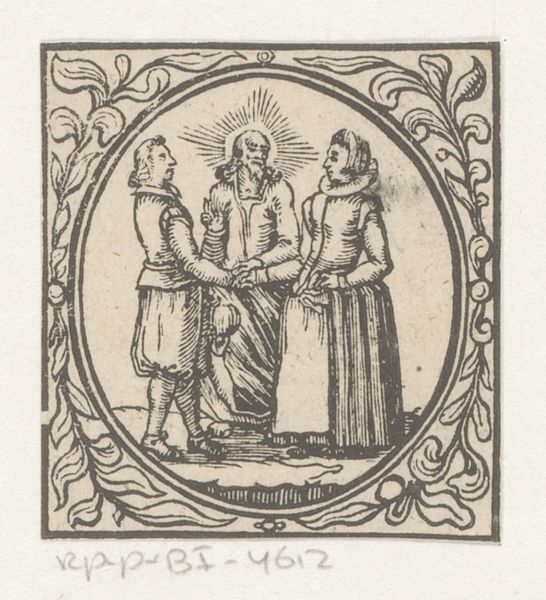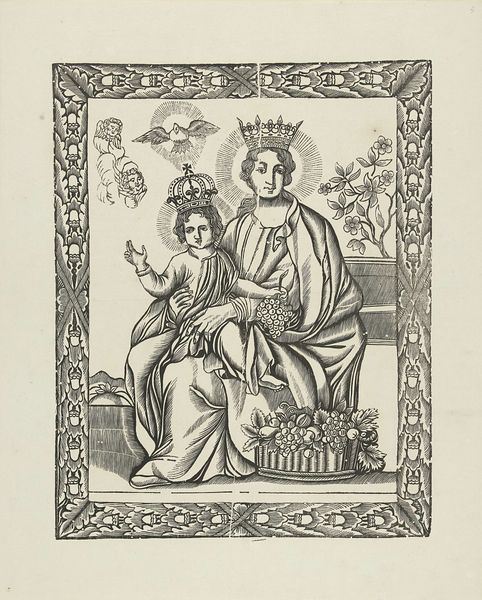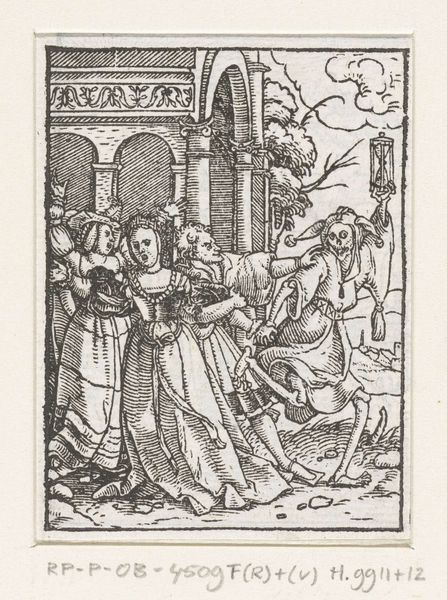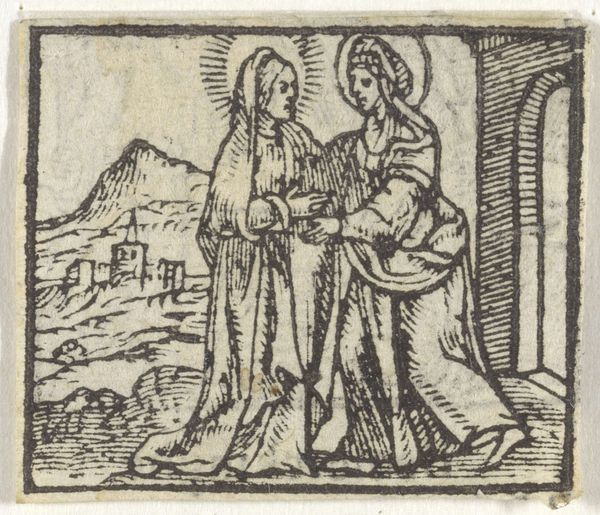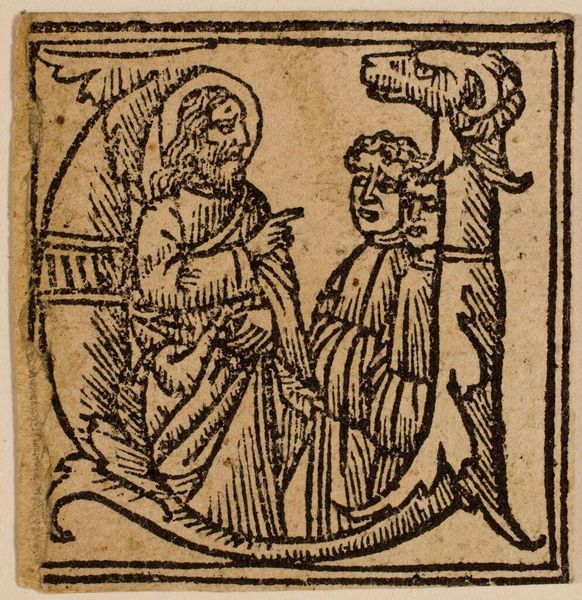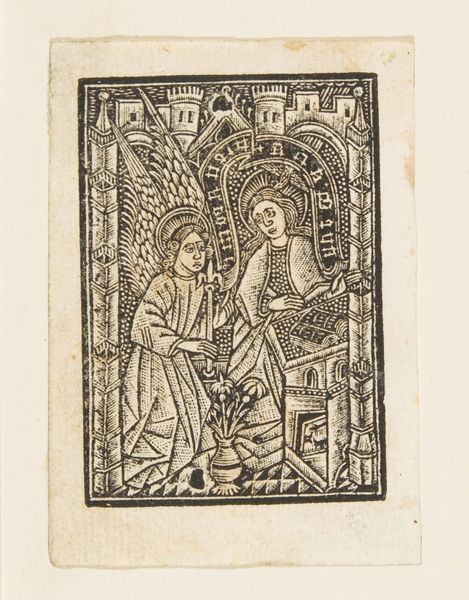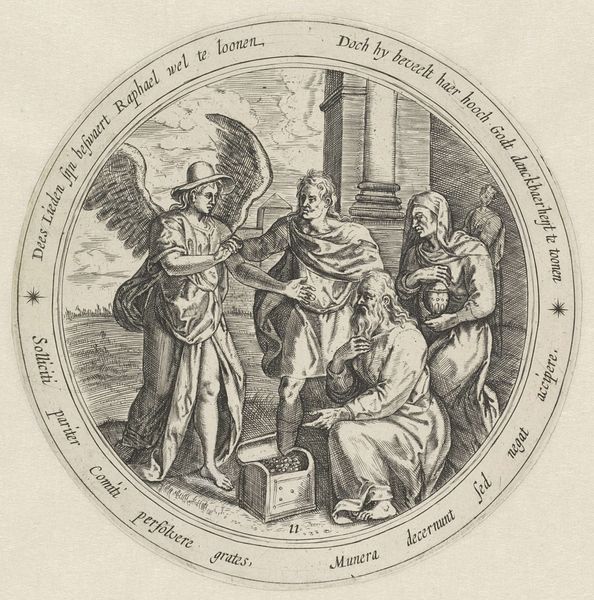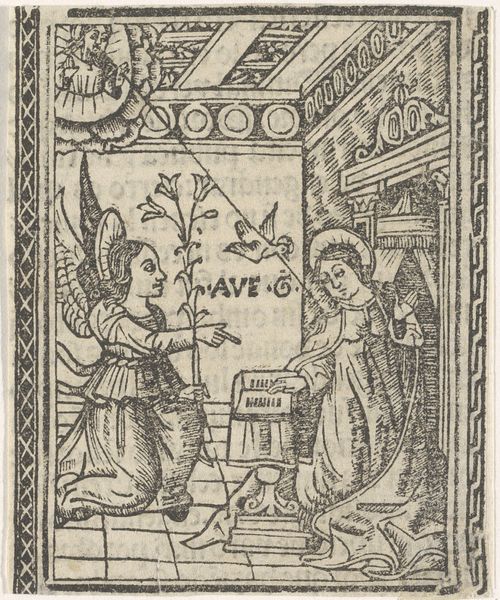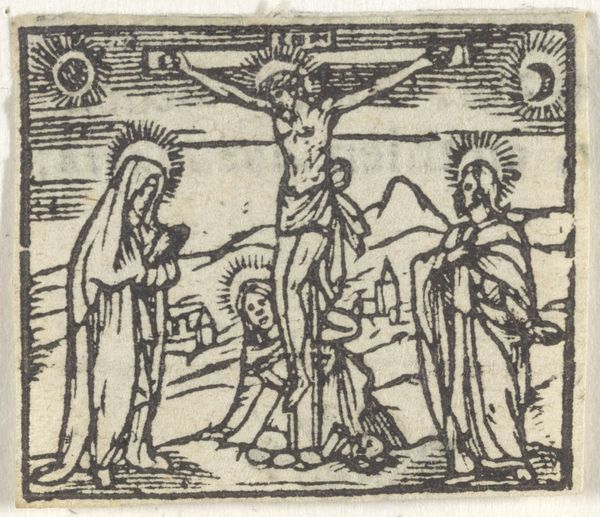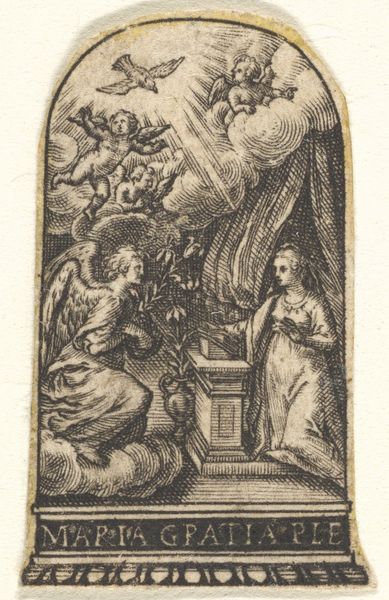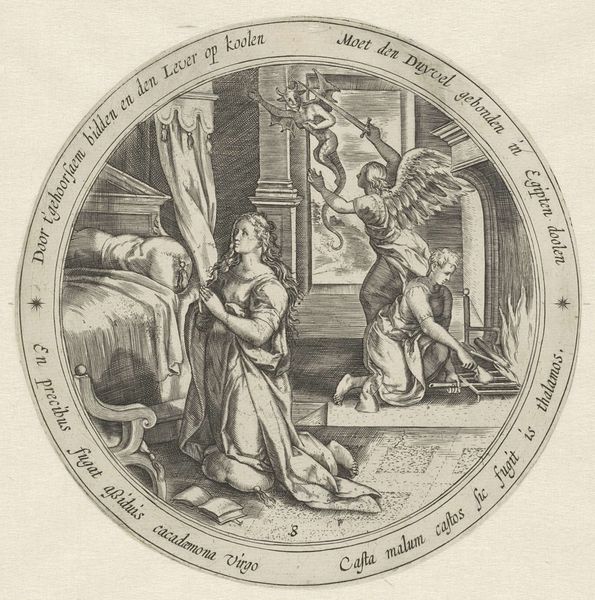
drawing, print, woodcut
#
drawing
# print
#
figuration
#
woodcut
#
history-painting
#
italian-renaissance
Dimensions: sheet: 1 5/16 x 1 5/16 in. (3.3 x 3.3 cm)
Copyright: Public Domain
Curator: This woodcut, titled "Virgin and Child with St. Anne", was created by an anonymous artist during the 15th century, and currently resides at the Metropolitan Museum of Art. Editor: It strikes me as incredibly intimate, almost claustrophobic. All three figures are contained within a circle, intensely close, and rendered in sharp contrast, black lines carving out the forms. Curator: The tight composition emphasizes the maternal lineage and the important place of the domestic sphere in religious and social constructs. Considering its time, it’s also worth pointing out the complicated representation of motherhood. It depicts both idealized maternity and the implicit recognition of labor, societal roles, and the female body’s burdens. Editor: Burden feels right! They seem weighty, grounded. Look at the folds of their clothing—the artist is really focused on the physical. But also, a question – why the haloes? They're almost comically large, and in such stark contrast to the crosshatching everywhere else. They feel more like bursts than auras of divinity. Curator: Halos, of course, visually represent sanctity, divinity. In this context, haloes do not only depict holy figures but also invite viewers into the experience, shaping our interpretations and emotions, reminding us of power dynamics at play between the divine and everyday experience. Editor: Interesting point, about how the piece can be seen as relatable… It reminds me a bit of family photos, maybe ones a bit formal or serious… the women both appear quite stern-faced. Is that the period aesthetic, or do you think there’s something else happening there? Curator: To me, that intensity comes from its intersection with religious and secular functions, and that intersects with both societal expectations, a way for viewers to feel included in this sacred experience but it doesn’t translate as inviting when observed through today’s critical lens. Editor: That makes sense. Even despite those reservations, this humble, accessible medium of the woodcut makes it seem very present. The Virgin and Child become less remote, more like neighbors you could bump into at the market. I like that tension, the way the sacred pushes up against the everyday. Curator: Precisely. It’s a remarkable thing about art through time and across societal contexts: it can represent not only divine things, or social constructs, but also how different societal norms shape beliefs. This makes it all the more potent when questioning and reframing existing theories about maternity.
Comments
No comments
Be the first to comment and join the conversation on the ultimate creative platform.
